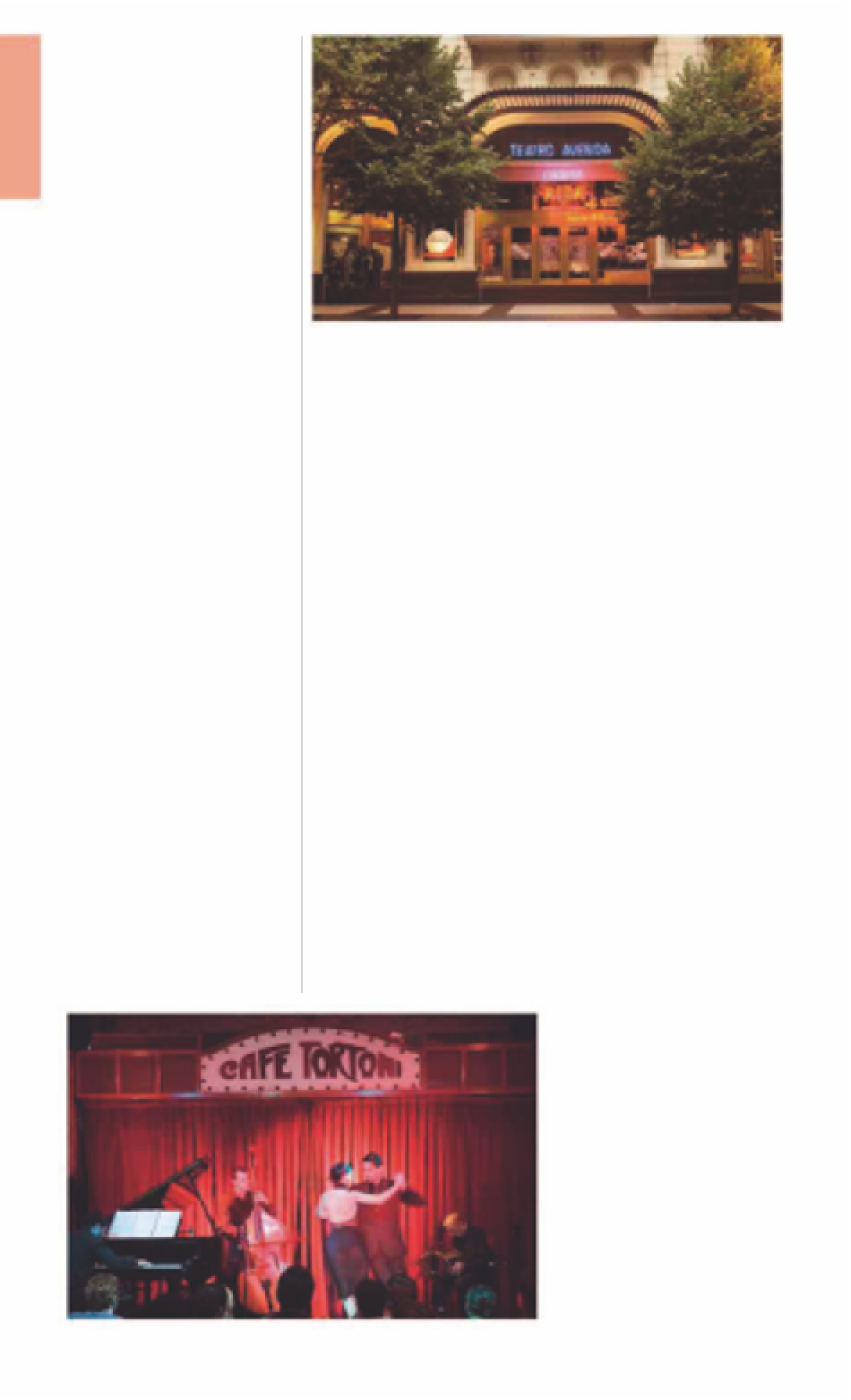Travel Reference
In-Depth Information
q
Café Tortoni
Ave de Mayo 825.
City Map
3 D5.
Te l
(011) 4342-4328.
Piedras.
Open
8:30am−10:30pm daily.
Closed
25 Dec & 1 Jan. Academia
Nacional del Tango: Ave de Mayo
833.
Te l
(011) 4345-6967.
Open
2:30-7:30pm Mon-Fri.
∑
cafetortoni.com.ar
Opened in 1858, Café Tortoni
is named after a bohemian
drinking den on the famous
Boulevard des Italiens in Paris
and is probably the oldest and
grandest café in the city. At the
end of the 19th century, its
basement was a popular
meeting place for La Peña, a
group of local writers and artists
led by the painter Benito
Quinquela Martín. Soon many
of the city's greatest young
talents, including Jorge Luis
Borges, Roberto Arlt, and
Alfonsina Storni, as well as
visitors such as Federico García
Lorca and Luigi Pirandello, were
seen nursing a coffee at Tortoni.
A corner of the café, called the
Rincón de los Poetas (Poet's
Corner), harks back to those
days. Tango legend Carlos
Gardel also performed here,
and the café continues to host
tango and jazz concerts.
Statesmen and visiting digni-
taries such as King Juan Carlos
of Spain and Hillary Clinton
have also stopped by.
The first floor is occupied by
the
Academia Nacional del
Tango
, which has a research
library for tango scholars.
There is also a schedule of
dance classes held here. The
classes cover all levels and
A quiet evening outside the brightly lit Teatro Avenida
operate on a drop-in basis.
The Academia is home to a
self-styled World Tango
Museum that opens daily.
and the number of Spanish
tapas bars and restaurants that
lie on or just off the avenue.
Among the Teatro Avenida's
many past glories was a run of
plays by Federico García Lorca,
who lived at Avenida de Mayo
1152 between 1933 and 1934.
w
Teatro Avenida
Ave de Mayo 1220.
City Map
3 D5.
Te l
(011) 4381-0662.
Lima.
Open
1-8pm daily.
e
Palacio Barolo
Ave de Mayo 1370.
City Map
3 D5.
Te l
(011) 4381-2425.
If it were not for the preemin-
ence of the Teatro Colón (
see
pp76-7
), this beautiful theater,
reopened in 1994 after almost
being destroyed by a fire,
would get the attention it
deserves. Built along French
beaux-arts lines, with Italianate
elements, the theater has a
magnificent entrance.
The theater opened in 1908
with a play by Lope de Vega.
This initiated a steady tradition
of performing Spanish
zarzuela
(Spanish operetta) works, in
keeping with the Avenida de
Mayo's status as Buenos Aires's
“most Spanish” street - both in
terms of the architecture, which
copies that of the Old World,
Saenz Peña.
8
4, 5, 6, & 7pm Mon & Thu.
&
7
∑
pbarolo.com.ar
Incorporating elements of
Dante's
Divine Comedy
, the
romantic, Neo-Gothic Palacio
Barolo was built by architect
Mario Palanti. He was
commissioned by Luigi Barolo
- a great admirer of Dante
Alighieri - who arrived from
his native Italy in 1890 and
made money cultivating and
spinning cotton in the
northern province of Chaco.
In 1919, work began on this
grand 22-story building. It is
328 ft (100 m) high, reflecting
the 100 cantos of the
Divine
Comedy
, while nine literary
citations carved at the entrance
hall echo the nine infernal
hierarchies. The first 14 floors
of the Palacio are Purgatory,
while the heavens above are
crowned by a spectacular
domed lighthouse. The
number of offices on each floor
equals the stanzas that the
cantos contain. Some of the
details in the building are still
waiting to be decoded, but this
cryptic quality is perhaps what
makes the edifice a true
homage to Dante.
A lively tango show at the landmark Café Tortoni
For hotels and restaurants see pp278-83 and pp288-99




































